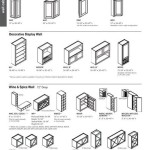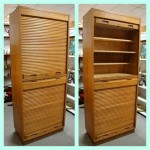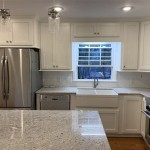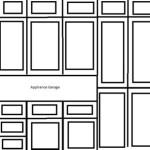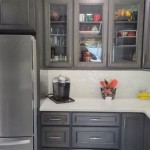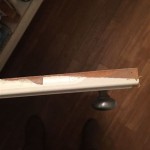Can You Paint Wood Kitchen Cabinets Without Sanding? A Comprehensive Guide
Repainting kitchen cabinets offers a cost-effective way to revitalize a kitchen's aesthetic. Traditionally, sanding has been considered a critical step in this process, believed necessary for proper paint adhesion and a smooth finish. However, advancements in paint technology and surface preparation techniques now present viable alternatives to traditional sanding. This article explores the possibility of painting wood kitchen cabinets without sanding, detailing the methods, materials, and considerations involved.
The primary purpose of sanding before painting is to create a mechanically keyed surface. This roughened texture allows the primer and paint to grip the existing finish more effectively, preventing peeling, chipping, and premature wear. Sanding also removes any existing gloss, dirt, grease, or loose paint that could interfere with adhesion. While these are valid concerns, certain products and techniques can address them without resorting to the labor-intensive process of sanding.
Understanding the Need for Sanding: Surface Preparation is Key
Regardless of whether sanding is employed, thorough surface preparation remains paramount. The success of any paint job, with or without sanding, hinges on a clean, sound substrate. Failure to adequately prepare the surface will invariably lead to paint failure, regardless of the paint's quality or application.
Degreasing is crucial, especially in a kitchen environment where cabinets are exposed to cooking oils and residues. A strong degreaser, such as trisodium phosphate (TSP) or a phosphate-free alternative, should be used to remove all traces of grease and grime. The cabinets must be thoroughly rinsed with clean water and allowed to dry completely before proceeding.
Inspection for damage is also essential. Any chips, cracks, or dents should be repaired with wood filler and allowed to dry thoroughly. Once dry, the filler should be sanded smooth to blend seamlessly with the surrounding surface. This ensures a uniform base for the paint, preventing imperfections from being amplified by the new finish.
Removing hardware, such as knobs, pulls, and hinges, is another important step. This allows for easier access to the entire surface of the cabinets and prevents paint from getting on the hardware. If the hardware is to be reused, it should be cleaned and stored in a safe place. If new hardware is being installed, the existing holes may need to be filled and new holes drilled to accommodate the new hardware’s dimensions.
Exploring Alternatives to Traditional Sanding
Several products and approaches enable painting wood kitchen cabinets without sanding. These methods primarily rely on chemical bonding and surface preparation techniques that enhance paint adhesion without the need for mechanical abrasion.
Liquid deglossers, often referred to as "liquid sandpaper," are chemical solutions designed to dull the existing finish and create a surface suitable for painting. These products work by etching the surface, creating microscopic pores that the paint can grip. Application typically involves wiping the deglosser onto the surface with a cloth, allowing it to sit for a specified period, and then wiping away any residue. It is crucial to follow the manufacturer's instructions carefully, as improper use can damage the existing finish.
Another alternative is the use of bonding primers. These specialized primers are formulated to adhere tenaciously to a variety of surfaces, even those that are glossy or otherwise difficult to paint. Bonding primers often contain additives that promote adhesion and create a strong bond between the existing finish and the topcoat. Selecting a high-quality bonding primer is crucial for achieving a durable and long-lasting finish. Application is similar to that of traditional primers, using a brush, roller, or sprayer.
Using a scrub pad with a degreaser can provide a gentle abrasive action that aids in cleaning and dulling the surface. This method is less aggressive than sanding but can still effectively remove dirt, grease, and loose paint. It is important to use a non-scratch scrub pad to avoid damaging the existing finish. This method may be preferred for cabinets with delicate or intricate details.
Choosing the Right Paint and Application Technique
The selection of paint plays a critical role in the success of a no-sanding paint job. Paints formulated with self-priming properties or enhanced adhesion are generally preferred. Acrylic latex paints are a popular choice due to their durability, ease of application, and low VOC content. Alkyd paints, while offering excellent durability and leveling properties, typically require longer drying times and emit higher levels of VOCs.
The application technique also contributes significantly to the final outcome. Using multiple thin coats of paint is generally recommended over applying thick, heavy coats. Thin coats allow the paint to dry evenly and prevent runs and drips. Each coat should be allowed to dry completely before applying the next one, following the manufacturer's recommendations for drying times.
Brushing, rolling, and spraying are all viable methods for applying paint to kitchen cabinets. Brushing is suitable for smaller areas and intricate details, while rolling is more efficient for larger, flat surfaces. Spraying offers the most uniform and professional-looking finish but requires specialized equipment and proper ventilation. Regardless of the chosen method, it is important to use high-quality applicators and to follow the manufacturer's instructions for paint application.
Prior to painting all the cabinets, it’s advisable to test the chosen method and paint on a less visible area, such as the inside of a cabinet door. This allows for evaluating the adhesion and finish before committing to the entire project. It also provides an opportunity to adjust the technique or materials as needed.
The Importance of Proper Drying and Curing
Drying and curing are distinct processes essential for achieving a durable and long-lasting paint finish. Drying refers to the evaporation of solvents from the paint, while curing involves the chemical hardening of the paint film. Proper drying and curing are crucial for ensuring that the paint adheres properly and resists chipping, scratching, and peeling.
Drying times vary depending on the type of paint, humidity, and temperature. Generally, it is recommended to allow each coat of paint to dry for at least 24 hours before applying the next coat. Thorough drying is essential for preventing the paint from lifting or wrinkling.
Curing can take several days or even weeks, depending on the paint formulation. During the curing process, the paint film becomes increasingly hard and durable. It is important to avoid heavy use or cleaning of the cabinets during the curing period to prevent damage to the finish. Consult the paint manufacturer's instructions for specific curing recommendations.
Maintaining proper ventilation during the drying and curing process is also important. Adequate ventilation helps to remove solvents from the air and promotes faster drying times. Opening windows or using fans can improve ventilation and reduce the risk of solvent buildup.
While it's possible to paint wood kitchen cabinets without sanding, the success largely depends on meticulous surface preparation, the selection of appropriate products, and adherence to proper application techniques. Weighing the potential benefits of time savings against the risk of compromised adhesion is crucial for making an informed decision.

How To Paint Kitchen Cabinets Without Sanding Or Priming

How To Paint Laminate Cabinets Without Sanding The Palette Muse

How To Paint Kitchen Cabinets Without Sanding Sustain My Craft Habit

Painting Over Oak Cabinets Without Sanding Or Priming Hometalk

How To Paint Cabinets Without Sanding

How To Paint Kitchen Cabinets Without Sanding The Budget Decorator

How To Paint Fake Wood Kitchen Cabinets Simple Made Pretty 2024

Can You Paint Cabinets Without Sanding Trusted Coatings

How To Paint Cabinets Without Removing Doors House Mix

How To Paint Oak Cabinets Without Sanding 100 Room Challenge Week 2 A Heart Filled Home Diy Decor
Related Posts

